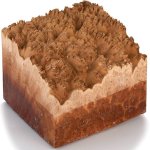Plateau is not generally considered a flaw. It is a feature and highlighted on purpose.
Freehand Pipe Blemishes
- Thread starter Ben.R.C
- Start date
You are using an out of date browser. It may not display this or other websites correctly.
You should upgrade or use an alternative browser.
You should upgrade or use an alternative browser.
SmokingPipes.com Updates
Watch for Updates Twice a Week
Wow ! If anyone can't stand any of the pipes here for those terrible blemishes send them to me. I'll be able to think of something to do with them. It'll be tough but I'll manage.
You can't cover a flaw with plateau. Plateau is there first. You'll only know if there is a flaw if you remove the plateau. It is the outside of a Burl. Pipe makers design shapes around keeping a portion of plateau. You can really only rusticate or sand past a flaw, not get a new portion of plateau.The plateau portion of the pipe you show is clearly not a flaw, however, it’s hard to tell whether the carver included it for purely aesthetic purposes or to cover up a sand pit or other imperfection in the briar. In either event, if you like the pipe and the price is right, my advice (for what it’s worth) is to go for it.
Perhaps a bad choice of words on my part as I didn't mean to suggest that the carver can literally "cover" a flaw by leaving the plateau. What I should have said is that the carver either intentionally left the plateau untouched for aesthetic reasons or saw something in the burl that he/she didn't like and decided to leave it alone. I can't tell from the photo.You can't cover a flaw with plateau. Plateau is there first. You'll only know if there is a flaw if you remove the plateau. It is the outside of a Burl. Pipe makers design shapes around keeping a portion of plateau. You can really only rusticate or sand past a flaw, not get a new portion of plateau.
Before this thread, I’d didn’t know what plateau meant, in spite of my lifer status, I’ve been smoking for less then a year. I’m glad I posted this, learned something new. Thanks!Plateau is not generally considered a flaw. It is a feature and highlighted on purpose.
Wow, you really got to buying some nice pipes fast! Seeing your posts on the WAYS thread and your liver status made me think you were a seasoned vet.Before this thread, I’d didn’t know what plateau meant, in spite of my lifer status, I’ve been smoking for less then a year. I’m glad I posted this, learned something new. Thanks!
I tend to go hard into things, this trait has its pros and cons.Wow, you really got to buying some nice pipes fast! Seeing your posts on the WAYS thread and your liver status made me think you were a seasoned vet.
Go hard in the paint!I tend to go hard into things, this trait has its pros and cons.
I'm pretty late in getting to this thread, but if nothing else, I bet this pipe feels nice in the hand. A little "grip pad" on an otherwise smooth shape.I often see pipes of interest with one or two spots where the carver decided not to try to correct what I assume is a flaw in the pipe. I don’t think I mind this depending on the overall esthetics of the piece. I’m curious about others tastes in regards to these blemishes. In some ways they could be looked at as adornments instead of flaws. Here is an example:
View attachment 233532

like that pipe super pugly. Pugly is something that is both ugly and appealing. Like pugs. They're ugly but oh so cute.This pipe is the opposite of the original pipe in question, where the plateau is mostly intact. Is the “flaw” where it’s smooth?
In all seriousness, if you look at the last shot with the top view of the chamber, this gives you a rare view of the tubular structure of the briar root extending out to the plateau in 360 degrees.
View attachment 234100
View attachment 234101
View attachment 234102
View attachment 234103
like that pipe super pugly. Pugly is something that is both ugly and appealing. Like pugs. They're ugly but oh so cute.
I couldn't not get it. Taking a briar root and retaining so much of its original form was irresistible.
I find high end weird pipes a lot like I find avant garde art. When I like it the stuffs great, but sometimes it just feels like someone forgot that sometimes no one is doing it that way because it sucks to do it that way. This pipe is interesting in a way that warrants it's existence. It's kind of minimalist in the way I was told freehands should be. Where the carver in this case is really letting the briar just be it's natural self. It does almost look like it grew that way and someone stuck a stem on it.I couldn't not get it. Taking a briar root and retaining so much of its original form was irresistible.






